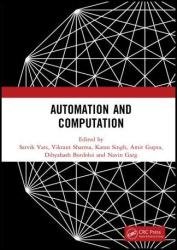 Название: Automation and Computation
Название: Automation and ComputationАвтор: Satvik Vats, Vikrant Sharma, Karan Singh, Amit Gupta
Издательство: CRC Press
Год: 2023
Страниц: 509
Язык: английский
Формат: pdf (true)
Размер: 19.3 MB
The Wireless sensor networks (WSNs) are made up of spatially dispersed autonomous sensors that monitor environmental or physical elements like temperature, sound, and pressure. These sensors’ data is collectively transmitted to a destination via network infrastructure. Because sensor nodes are energy-constrained devices, energy-efficient routing techniques have become more important. Regardless of how far wireless sensor networks (WSN) have progressed, efficient energy utilization is still required to extend the lifetime of the network. The network lifetime depreciates in real-time applications due to sensor node battery limits. Different routing techniques exist, and we have examined and interpreted the results of two hierarchical algorithms, Low Energy Adaptive Clustering Hierarchy (LEACH) and Power Efficient Gathering in Sensor Information Systems (PEGASIS). The comparison is based on the amount of energy used each transmission and the WSN’s overall lifetime, with simulations performed in MATLAB.
Anomaly detection is a crucial concept across numerous research areas. Over the years, multiple efforts have been adopted to the arduous challenge of appropriately detecting and labelling anything unseen as unusual. Recently, this task has been solved with outstanding results utilizing the adversarial training method and generative adversarial networks (GANs). This article reviews the various GAN-based anomaly detection methods and discusses their advantages and disadvantages.
Internet of things is an emerging innovative technology that in order to increase the efficiency, potential, and smooth operation of devices regardless of physical barriers, connects them to internet. Presently, IoT technology is being applied to homes appliances, monitor our health easily and accurately and in the field of power energy distribution using with Smart grid system more easily and effectively. Areas that present the predominant application of IoT technology are homes and offices appliances, transportation, healthcare, telecommunications, agriculture, the rapid expansion of IoT devices presents some security related new challenges. Heightening uses of IoT devices leads to huge accumulation of data on clouds increasing its loads. Most importantly, this decline in capacity of IoT devices poses some grievous security threats. The goal of this paper is to present a detailed review of the security-related challenges solutions in Fog-based IoT.
One crypto-heavy technology, blockchain, has been getting much attention lately. Even though blockchain security and privacy have been the subject of many studies in the recent past, the cryptographic building blocks used in blockchain have not been fully explored. Hopefully, it will help cryptographers studying blockchain and financial engineers and managers looking for cryptographic-based solutions for blockchain-assisted and blockchain-based work. This paper primarily focuses on different consensus algorithms and how cryptographic and other evaluation parameters can affect and change blockchain performance.
Скачать Automation and Computation